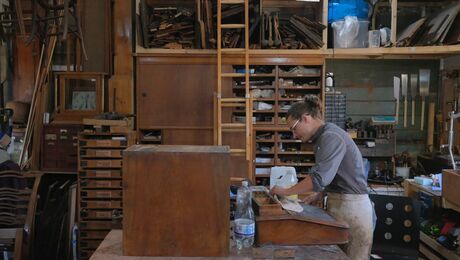The song “Cotton-Eyed Joe,” by some accounts, was heard sung on plantations in America by slaves since before the Civil War. However, the version popularized in 1994 by Swedish Americana-themed Eurodance group Rednex, (and then later performed by Daniel Radcliffe and company for the soundtrack of the bizarrely beautiful “Swiss Army Man”) contains the key to an entire ethical approach to restoration and conservation.
Howdy, my name is Shane. I am a furniture restorer and conservator based in Sydney, Australia. For some reason I’ve been allowed to write content for FineWoodworking.com. The beloved and dearly missed Nancy Hiller did a much better summary of my life than I’ll ever be able to write myself, but I’ll try to introduce myself none the less.
I started my journey in woodworking and furniture properly only about 10 years ago. I had done some simple carpentry, event décor, and prop work prior, but never anything “fine.” However, in 2014, sick of working 9-5 doing something I didn’t care about, I started volunteering at an environmental charity in Sydney called The Bower. I learned from some of the other volunteers there about the basics of furniture repair and construction.
I spent the next few years building a furniture repair and woodworking program for them with the support of a number of other staff and volunteers, constantly trying to learn more and get better along the way. It wasn’t long before I realized, like I’m sure many of you have, that the things that people say confidently might in fact be based in absolutely nothing. I was given some really good advice, and I was given some really bad advice. The problem was that I didn’t understand enough to be able to tell the difference between the two.
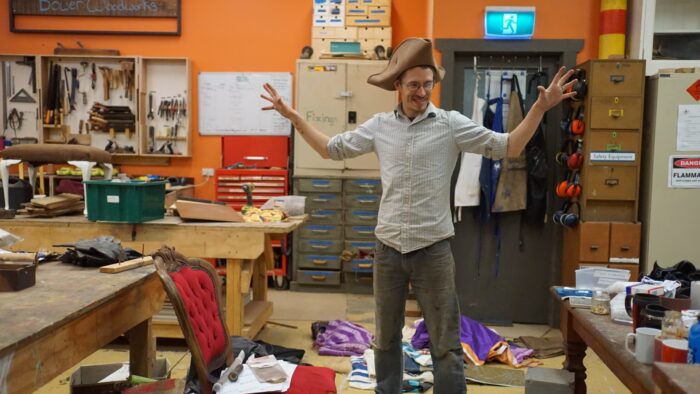
It was in an effort to make sense of everything I was told that I came across the tome that is “Conservation of Furniture” edited by Shayne Rivers and Nick Umney. This book seemed to have a scientific approach to repair. The things in the book seemed based in reason and not just anecdote. I was intrigued, and I came to believe that Conservators were a group of people who had all the answers, who understood what was going on, and who could tell me how to repair something so that it would last forever.
So, I quit my job at The Bower. I traveled to the UK to study Furniture Conservation at West Dean College, and I’ve been working as a professional restorer/conservator for the most part ever since. And the reality is that the more you know, the more you realize what you don’t know.
Perhaps I’ll get into more of my educational journey in later posts, but I’ll tell you this: There’s a lot about furniture and wood that we still don’t actually know for certain, and not everyone agrees on the right thing to do.
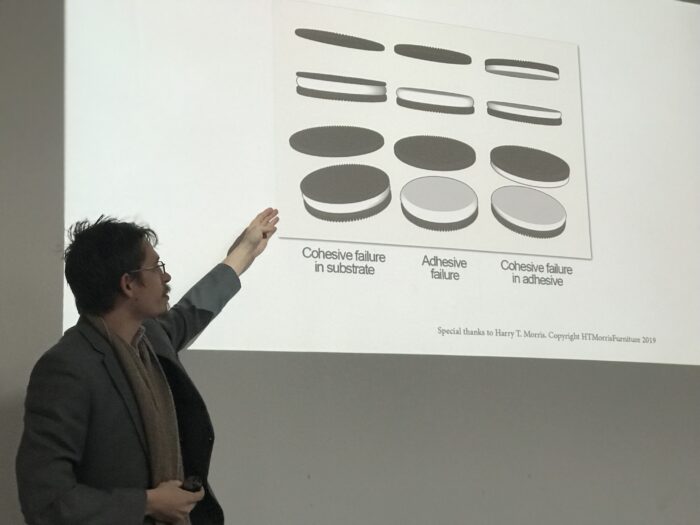
When asked “what is the right way to restore or conserve this piece of furniture,” people who actually know what they are talking about almost always answer, “It depends.”
Many people have tried to define the difference between restorers and conservators. Years of education, an understanding of science, and academic qualifications sometimes come up in these discussions. As far as I’m concerned, restoration is not separate from conservation.
In a strict dichotomy, restoration and preservation are on two sides of a line, with restoration meaning a complete overhaul and erasure of history to return something to its original state or former glory, and preservation being the locking of the object in time forever. Obviously neither are what happens most of the time.
My job may mean returning a piece to an earlier state, but it might also mean preserving it in the state it’s in right now. In some cases, you may repair only its function but leave the age on its surface, or you may decide to return it to a state between when it was created and now (removing paint but not patina). Sometimes the most appropriate choice is to do nothing. It is coming to that decision and then following through on that decision that defines my work as a restorer/conservator. This is also called sympathetic restoration, or simply “being thoughtful.” I honestly don’t care about the titles associated. I care about the pieces and who they matter to.
The question is what are the values of the object and for whom are they valuable? Is your home important because it functions as a house, because of who made it and how, or because you and your loved ones have lived your lives in it? Would you remove the classic measurements of your family’s heights from the door frame for the sake of returning it to its “former glory”?
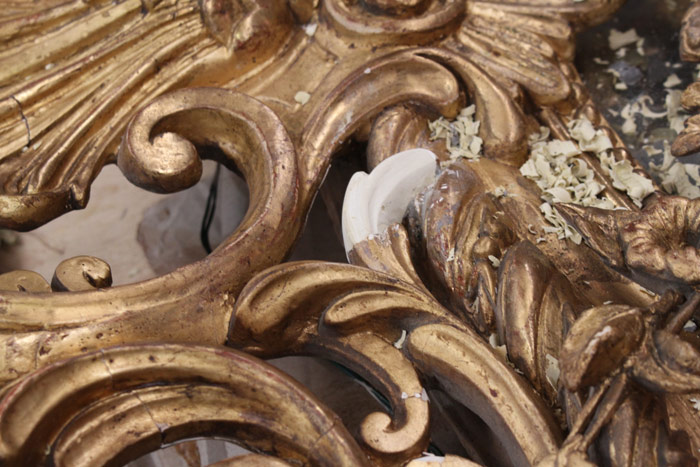
My job is to take these things into consideration. I balance them against an informed understanding of materials, history, construction, and techniques. And this is where The Cotton-Eyed Joe Approach comes back.
There are many frameworks for decision making, but this is one of my favorites and was coined by my friend, book and photograph conservator Nayla Maruuf. She says you have to ask yourself these two questions:
“Where did it come from?”
“Where will it go?”
First look at the history of the piece: how it was made, what it was made from, why it was made, what it was used for, where it has been, and what it has meant to people. This gives you an understanding of what you are trying to preserve and what you are trying to change.
Then look at where it will go. Is it going back into use in a home, for sale, in a museum, on display, in storage, in a field, in a fire? This tells you how far you have to go and what it needs long term.
I’ll give you an example to ponder.
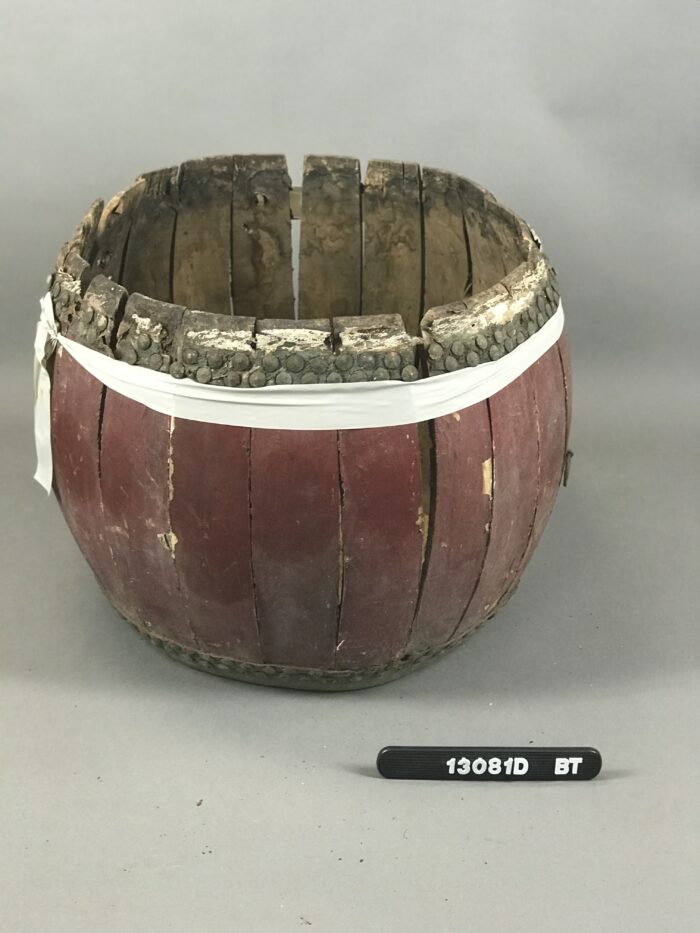
One of the first objects I worked on after finishing my Conservation degree was a wooden drum from a Lit Sung Goong temple in Cairns, Australia. The drum was a part of the Lit Sung Goong collection at the Cairns and District Chinese Association INC (CADCAI).
The piece had two distinct competing histories. It had been made as a ceremonial drum, intended to be beautiful and functional. The temple it was a part of, built in the late 1800s in northeastern Australia, had been demolished in the 1960s, and the community around it had taken many of its objects into their own homes to preserve them. Now, Cairns is a hot and humid place, and many of the objects, including the drum, suffered serious damage in the decades to follow. Made very similarly to coopered barrels, the drum is constructed with a series of shaped staves which tightly fit together and are held in place by a few bamboo dowels and the dried skins at the top and bottom [Click here for a related article on coopering]. The skins of the drum had shrunk and torn, the wooden staves had deformed, and it no longer held together.
This drum had a history as a proud functional and ceremonial object, but it also told the story of what happens when community spaces are destroyed, and the care that was taken to keep this drum well beyond its functional capacity. After treatment, it was to return to the CADCAI collection for storage and display.
As it goes forward, which of these stories might you try to maintain in your treatment of it? Do you try to keep both?
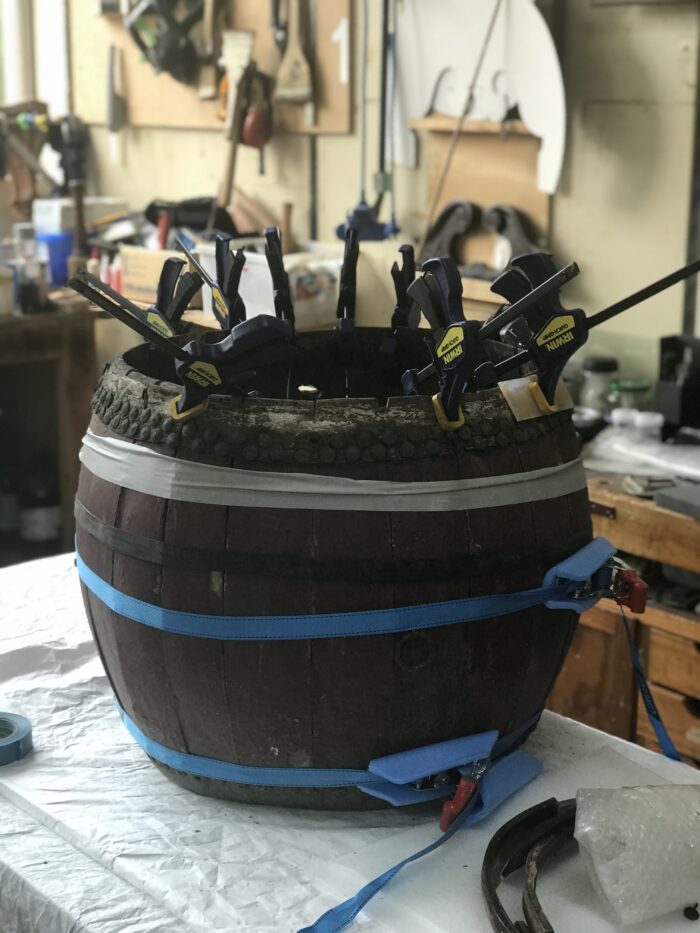
I am looking forward to writing more for Fine Woodworking. I think it’s important to have restoration, conservation,, and repair content on such a premier woodworking site. I have to apologize though, because I will probably have very few solid answers. I will try to share what I know, what I’ve learned, and what I’ve seen. But the more I learn, the fewer answers I feel I have. “It depends” is the unofficial motto of my field.
Sign up for eletters today and get the latest techniques and how-to from Fine Woodworking, plus special offers.

